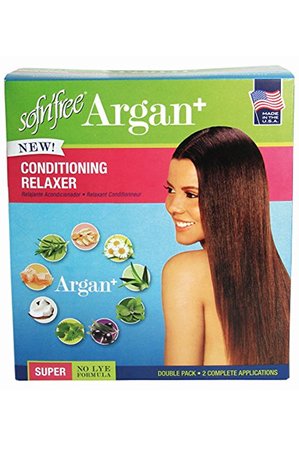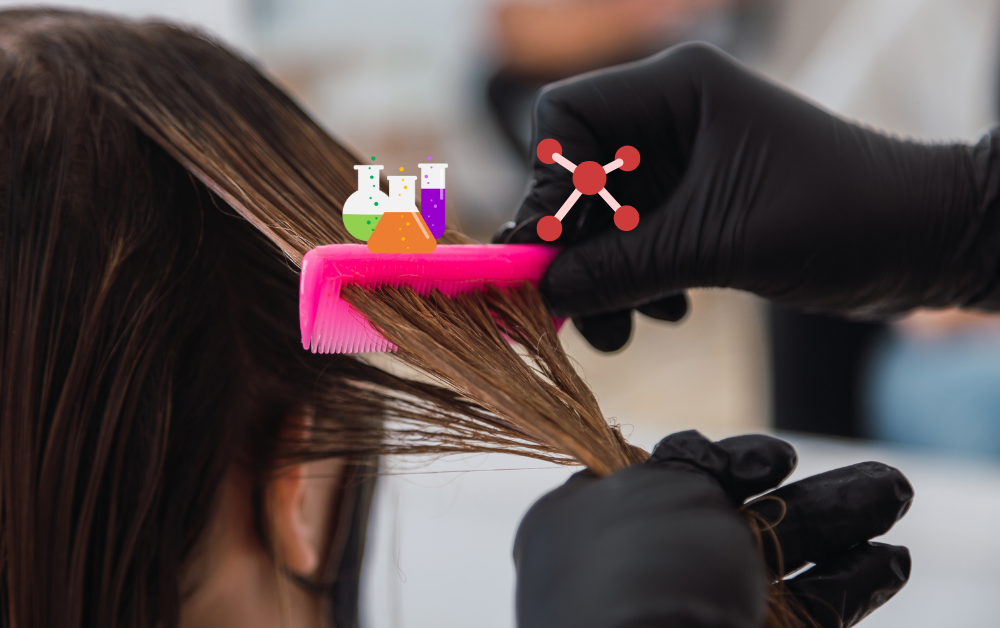If you have naturally curly or wavy hair, you may have considered using a chemical relaxer to straighten your locks. Relaxers are one of the cheaper options for permanent hair straightening and are a cost-efficient way of getting your hair straightened in the long term.
That being said, there are many types of chemical relaxers on the market, each with its own unique formulation and characteristics. In this article, we will explore the four main types of chemical relaxers: lye relaxers, no-lye relaxers, cream relaxers, and texturizers. We will discuss the active ingredients in each type of relaxer, their benefits, their drawbacks, and provide tips on how to use them safely and effectively. An essential part that isn’t often talked about.
So, whether you are looking to achieve sleek, straight hair or want to soften your natural curl pattern, this article will provide the information you need to make an informed decision about which chemical relaxer is right for you.
The Four Types of Chemical Relaxers

The four main types of chemical hair relaxers are:
- Lye relaxers: These relaxers contain sodium hydroxide, a strong alkaline chemical, as the active ingredient. Lye relaxers are typically the strongest and most effective at straightening hair, but they can also be harsh and cause damage if not used properly.
- No-lye relaxers: These relaxers do not contain sodium hydroxide, but instead use other chemicals, such as guanidine hydroxide or lithium hydroxide, to straighten the hair. No-lye relaxers are generally less harsh and damaging than lye relaxers, but they may not be as effective at straightening very curly or resistant hair.
- Cream relaxers: These relaxers are typically more gentle than lye or no-lye relaxers, as they are applied in a cream form rather than a liquid. They contain a combination of chemicals, including sodium hydroxide or guanidine hydroxide, to straighten the hair.
- Texturizers: These products are a milder form of relaxer that do not completely straighten the hair but rather soften and loosen the natural curl or wave pattern. Texturizers contain a lower concentration of chemicals than traditional relaxers, and are often used to give hair more body and movement rather than completely straightening it.
It’s important to note that all chemical hair relaxers can potentially cause damage to the hair and scalp if not used correctly. It’s always best to follow the instructions on the product carefully and to seek the advice of a professional stylist if you are considering using a chemical relaxer.
What is the safest relaxer?
All chemical hair relaxers have the potential to cause some level of damage to the hair and scalp if not used correctly. This is to be expected, as chemicals, especially ones in relaxers, break down your hair to give you that straightened look which will inevitably cause damage.
However, some relaxers may be gentler and cause less damage than others, depending on their formulation and the condition of your hair.
One type of relaxer that is generally considered to be safer and less damaging is the cream relaxer. Cream relaxers are applied in a cream form rather than a liquid and typically contain a lower concentration of chemicals than lye or no-lye relaxers. They are designed to be more gentle on the hair and scalp, and are often recommended for people with sensitive skin or damaged hair.
Texturizers are another type of relaxer that is generally considered to be gentler than traditional relaxers. Texturizers contain a lower concentration of chemicals than traditional relaxers, and are designed to soften and loosen the natural curl or wave pattern rather than completely straighten the hair. They are often used to give hair more body and movement rather than to achieve a completely straight look.
Remember that nothing will straighten your hair without causing potential damage to it; even hair straighteners cause damage. If you already have damaged hair or thinner hair, it is best to avoid straightening altogether.
